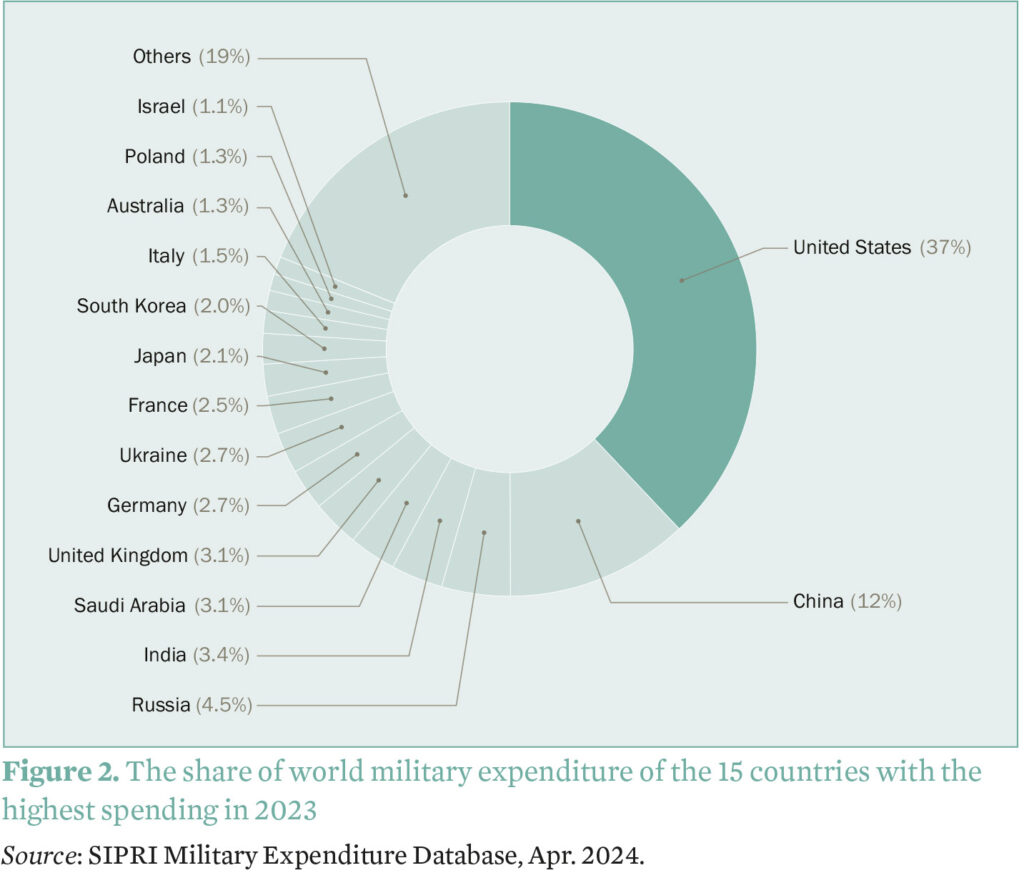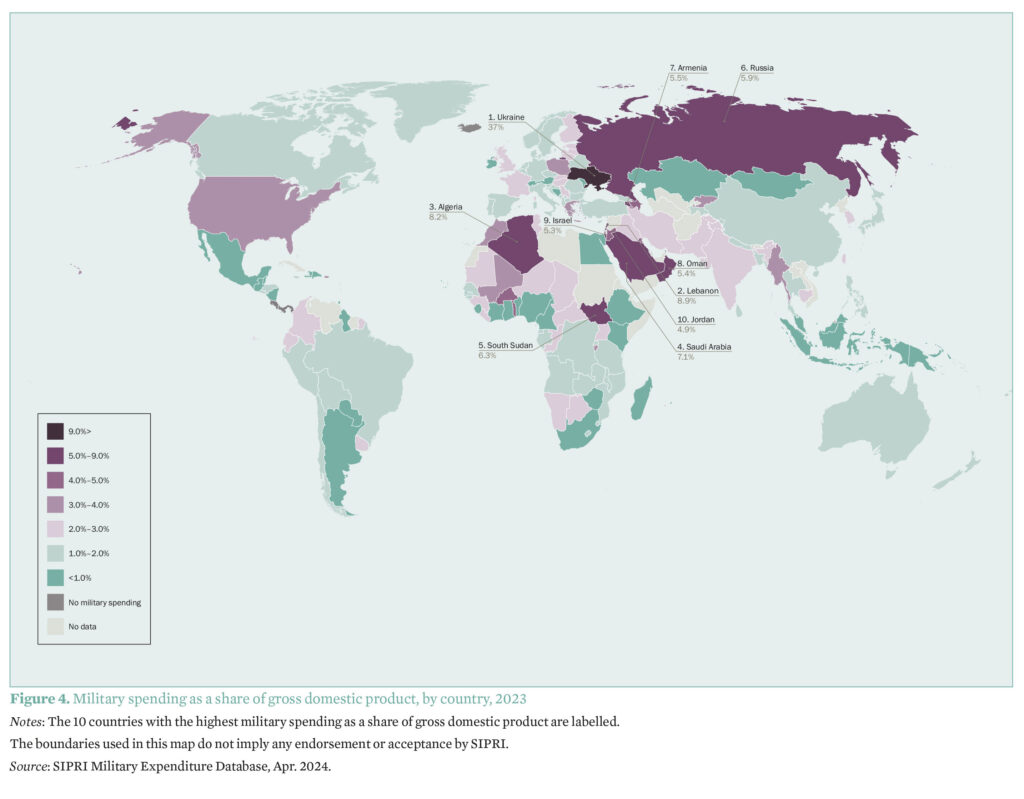- Published on
The Economics of Defence: A Comparative Analysis of Major Military Powers
- Authors

- Name
- Gagan Narwal
- @gaganjyotn

- Name
- Avneet Singh
- @sshmatrix_
Major Military Powers
In 2023, global military expenditure is estimated to exceed $2.1 trillion, with the United States leading the pack. The distribution of this spending is not uniform, as different countries allocate varying proportions of their GDP to defence. As the geopolitical landscape evolves, nations are increasingly recognizing the importance of military readiness. This analysis particularly focuses on 2 significant players: the United States and China, the largest spenders in the domain.
| Country | Total Military Expenditure (USD) | Defense Spending as % of GDP |
|---|---|---|
| United States | $800 billion | 3.4% |
| China | $300 billion | 2.0% |
| India | $75 billion | 2.4% |
| Russia | $85 billion | 4.2% |
| United Kingdom | $75 billion | 2.2% |


1. Aerospace and Air Combat Systems
- F-35 Lightning II: Over $11 billion annually for procurement and sustainment.
- B-21 Raider: Estimated to receive approximately $3 billion in research and development.
2. Missile Defense
- Ground-based Midcourse Defense (GMD): Around $1.5 billion for interceptors and systems.
- Aegis Ballistic Missile Defense: Funding of about $2 billion annually for enhancements.
3. Naval Capabilities
- Virginia-Class Submarines: Approximately $2.5 billion per year for procurement.
- Ford-Class Aircraft Carriers: Estimated costs of $13 billion for the lead ship.
4. Cybersecurity
- Cybersecurity Programs: Roughly $10 billion allocated for cybersecurity initiatives across military branches.
5. Artificial Intelligence and Autonomous Systems
- AI Initiatives: Around $1.5 billion dedicated to AI development and integration in military operations.
6. Space Operations
- U.S. Space Force: Approximately $24 billion allocated for satellite systems, launch capabilities, and space-based assets.
7. Ground Combat Systems
- Joint Light Tactical Vehicle (JLTV): About $1 billion per year for procurement.
- Future Vertical Lift (FVL): Estimated funding of $1.4 billion for research and development.
8. Advanced Weapons Systems
- Hypersonic Weapons: Around $3 billion focused on developing hypersonic technologies.
- Directed Energy Weapons: Approximately $1 billion for research into laser and microwave systems.
9. Logistics and Supply Chain Technology
- Modernization Programs: Roughly $5 billion for improving logistics systems and automation.
10. Research and Development
- Overall R&D Spending: Approximately $100 billion is allocated to RDT&E across all branches.
China: Rising Power and Increasing Investment
China's military budget is projected at $300 billion for 2023, which constitutes about 2.0% of its GDP. This significant investment highlights China’s ambition to modernize its military capabilities and assert its influence in the Asia-Pacific region and beyond. Over the past two decades, China has consistently increased its defense spending, driven by regional tensions and aspirations for global leadership.
Chinese Defense Expenditure by Technology Area
Aerospace and Air Combat Systems
- J-20 Fighter Jet: Estimated funding around $2 billion annually for development and procurement.
- Upgrades for Other Aircraft: Significant investments for modernizing existing fleet, possibly totaling $3-4 billion annually.
Missile Defense
- DF Series Ballistic Missiles: Funding is part of a broader missile development budget estimated at around $5 billion annually.
- Advanced Missile Defense Systems: Investments in systems like the HQ-9 could total about $2 billion annually.
Naval Capabilities
- Type 055 Destroyers: Approximately $2 billion per ship; several ships are being procured annually.
- Aircraft Carriers: Estimated costs for new carriers around $6 billion each, with ongoing construction of multiple vessels.
Cybersecurity
- Cyber Warfare Programs: Rough estimates suggest $2-3 billion allocated annually for cybersecurity initiatives and offensive cyber capabilities.
Artificial Intelligence and Autonomous Systems
- AI Initiatives: Around $1 billion dedicated to AI development within the military context, focusing on autonomous vehicles and battlefield management systems.
Space Operations
- Chinese Space Programs: Estimated $8-10 billion annually for satellite launches, reconnaissance, and space capabilities under the PLA Strategic Support Force.
Ground Combat Systems
- Type 99 Main Battle Tank: Funding for modernization and procurement could be around $2 billion annually.
- Infantry Fighting Vehicles: Investments estimated at around $1 billion annually for upgrades and new vehicles.
Advanced Weapons Systems
- Hypersonic Weapons: Significant funding, possibly around $3 billion, focused on developing hypersonic technology, including glide vehicles and missiles.
- Directed Energy Weapons: Estimated at around $500 million for research and development of laser and microwave systems.
Logistics and Supply Chain Technology
- Modernization Programs: Rough estimates suggest around $3 billion for improving logistics systems and automation.
Research and Development
- Overall R&D Spending: Approximately $25-30 billion allocated for R&D across various military branches, reflecting a focus on innovative technologies.
The examination of military expenditures reveals a complex interplay between national security, economic strategy, and geopolitical ambitions. While China's position as the second-largest military spender quantitatively suggests a strong commitment to defense, a closer analysis, highlights significant gaps in technological capability compared to the United States.
To ensure its technological superiority and sustain global influence, the U.S. invests approximately $100 billion annually in research and development. This focus on innovation not only strengthens existing military technologies but also anticipates future challenges in a rapidly evolving security landscape.
Understanding these trends is essential for policymakers, analysts, and citizens as they confront an increasingly intricate global security environment. The disparities in military spending and technological investment underscore the importance of strategic planning and collaboration among allies, as well as the need for a comprehensive understanding of both current capabilities and future threats. This analytical perspective can guide more informed decisions about defense policy and international relations in an era marked by uncertainty and competition.